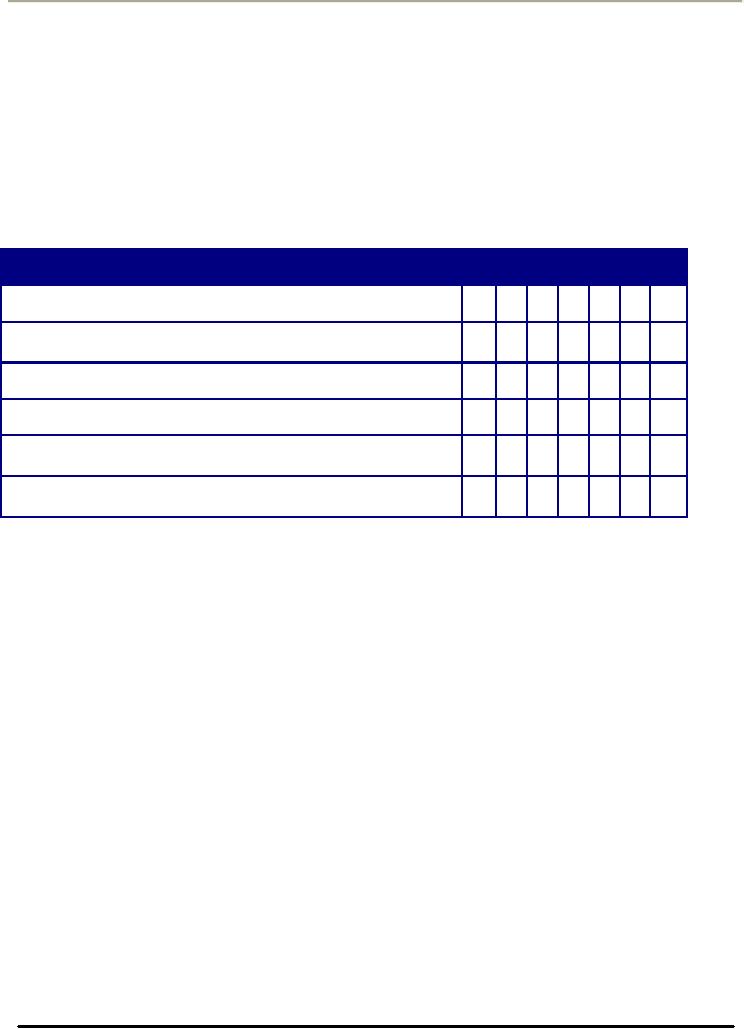 |

Consumer
Psychology (PSY -
514)
VU
Lesson
13
BASES
FOR SEGMENTATION:
DEMOGRAPHIC
SEGMENTATION
PSYCHOGRAPHIC
SEGMENTATION
OBJECTIVES:
UNDERSTANDING
Demographic
Segmentation
Age
Age
Effect
Cohort
Effect
Gender
Changing
Sex Roles
Marital
Status
Stages
of Family
Family
Life Cycle
Income
Education,
Age, Income
Psychographic
Segmentation
Market
consists of people, People
who are inhabitants of a certain
place (e.g. city, province
or country), are called
population.
Population can be seen in
terms of many of its
characteristics
Demographics
is a way to describe population in
terms of its defining
characteristics
1.
Demographic Segmentation
Includes
vital and measurable
statistics of a population, demographic
characteristics such as age,
sex, marital status,
income,
occupation and education are most
often used as the basis for
market segmentation
Demographics
help locate a target market.
Psychological and Sociocultural
characteristics help to describe
how its
members
think and how they
feel
Variables
of Demographic Segmentation
Demographic
Segmentation is is usually based
upon the following
variables:
�
age
�
gender
(male/female)
�
income
�
occupation
�
education
�
household
(family - style) size
1.
Age
Age
is an obvious way to divide the
market into segments since
so many products are based
upon "time of life"
a.
Diapers are for
babies
b.
Toys are for
children
c.
Entertainment for "over
19"
Two
kinds of effects are important to notice
while considering the age
factor in segmentation. These
include:
a.
Age Effect
b.
Cohort Effect
44

Consumer
Psychology (PSY -
514)
VU
a.
Age Effect
Age
effect includes occurrences due to
chronological age. Examples of the age
effect are heightened interest in
leisure
travel that often occurs for
people (single, ,married) during the
middle age (particularly in their
late fifties or
early
sixties)
a.
Cohort Effect
Occurrences
due to growing up in certain time
periods are called the
Cohort Effect. This is
captured by the idea
that
people hold onto interests they
grow up to appreciate.
2.
Gender
Gender
is an obvious way to divide the
market into segments since
so many products are
gender-specific
�
Cosmetics Industry
�
Clothing
�
Medical
products
�
Sports products/services
�
Entertainment
Men
on the other hand have been the
users of
2.
Psychographic Segmentation
Psychographic
Segmentation is lifestyle, social class,
and personality-based segmentation..
Psychographic profile of
a
consumer is composite
of:
Attitudes
Interest
Opinions
This
is commonly referred to as (AIO's)
AIO
Research
AIO
research seeks consumer
responses to a large number of statements
that measures:
Activities
How
the consumer or family spends time
(Pakistani consumer &
family)
Interests
Consumers'
family preferences and
priorities (Home, fashion,
food)
Opinions
How
the consumers feel about a wide variety of events
and political issues, social
issues, and state of
economy
AIO
Psychographic Inventories
AIO
Psychographic Studies use
Psychographic Inventory which is
designed to identify relevant aspects
of
consumers'
personality, buying motives, interests,
attitudes, beliefs and
values
45

Consumer
Psychology (PSY -
514)
VU
Example
Portion
of AIO Inventory used to identify
"Techno Road
Warriors"
Techno
Warriors: business people who spend a
high percentage of their
work week on the road, equipped
with
laptops,
cellular phones, electronic
organizers
Psychographic
Inventory
Please
read each of the following
statements and place an "X" in the
box that best indicates
how strongly you
"agree"
or "disagree" with the statement
Hypothetical
Profile of the "Techno Road
Warrior"
�
G
STATEMENTS
A
D
o
e
I
feel that my life is moving
faster and faster sometimes
just too fast
1
2
3
4
5
6
7
s
I
could count the pluses and
minuses technology has been
good for
1
2
3
4
5
6
7
o
me
n
I
find that I have to pull
myself away from
e-mail
1
2
3
4
5
6
7
t
Given
my lifestyle, I have more shortage of
time than money
1
2
3
4
5
6
7
h
e
I
like the benefits of the internet, but I
often don't have the time
to
1
2
3
4
5
6
7
take
advantage of them
i
I
am generally open to considering new
practices and new
technology
1
2
3
4
5
6
7
n
t
ernet
more than six times a
week
�
Sends
and/or receives 15 or more
e-mail messages/week
�
Regularly
visits websites to gather
information and/or to comparison
shop
�
Often
buys personal items via
internet
�
Belongs
to several reward programs (frequent
flyer programs, rent-a-car
programs and hotel
programs)
Results
of Psychographic Studies are
frequently reflected in firm's marketing
messages
46
Table of Contents:
- INTRODUCTION TO CONSUMER PSYCHOLOGY:Consumer Behavior
- INTRODUCTION TO CONSUMER PSYCHOLOGY:Consumer research
- INTRODUCTION TO CONSUMER PSYCHOLOGY:Marketing Mix, Product, Price
- INTRODUCTION TO CONSUMER PSYCHOLOGY:Customer Value, Perceived Value
- VALUE AND RETENTION FOCUSED MARKETING AND CONSUMER DECISION MAKING PROCESS
- CONSUMER RESEARCH:Quantitative Research, Qualitative Research
- MAJOR STEPS IN CONSUMER RESEARCH PROCESS:Design of Primary research
- QUANTITATIVE RESEARCH DESIGNS & DATA COLLECTION METHODS
- QUANTITATIVE RESEARCH DATA COLLECTION TECHNIQUES:ATTITUDE SCALES
- QUALITATIVE RESEARCH DESIGNS & DATA COLLECTION METHODS
- CUSTOMER SATISFACTION MEASUREMENT, SAMPLING, AND DATA ANALYSIS AND REPORTING
- MARKET SEGMENTATION AND ITS BASES:Geographical Segmentation
- BASES FOR SEGMENTATION: DEMOGRAPHIC SEGMENTATION PSYCHOGRAPHIC SEGMENTATION
- BASES FOR SEGMENTATION: SOCIOCULTURAL SEGMENTATION USE RELATED SEGMENTATION USAGE SITUATION SEGMENTATION
- BASES FOR SEGMENTATION: BENEFIT SEGMENTATION:Intrinsic Cues
- BASES FOR SEGMENTATION: HYBRID SEGMENTATION STRATEGIES
- MARKET SEGMENTATION IMPLEMENTING SEGMENTATION STRATEGIES ENVIRONMENTAL INFLUENCES CULTURE
- HOW CULTURE IS LEARNT ENVIRONMENTAL INFLUENCES:Formal Learning
- CULTURE AND ITS MEASUREMENT ENVIRONMENTAL INFLUENCES
- MEASUREMENT OF CULTURE ENVIRONMENTAL INFLUENCES:Consumer Fieldwork
- SUBCULTURE CHAPTER 4: ENVIRONMENTAL INFLUENCES
- AGE AND GENDER SUBCULTURE CHAPTER 4: ENVIRONMENTAL INFLUENCES
- BASES FOR SEGMENTATION: BENEFIT SEGMENTATION:Market Segmentation
- SOCIAL CLASS CHAPTER 4: ENVIRONMENTAL INFLUENCES:Occupation
- CONSUMER SOCIAL CLASSES CHAPTER 4: ENVIRONMENTAL INFLUENCES:Affluent Consumer
- CONSUMER SOCIAL CLASSES CHAPTER 4: ENVIRONMENTAL INFLUENCES:Membership Group
- CONSUMER SOCIAL CLASSES CHAPTER 4: ENVIRONMENTAL INFLUENCES:Shopping Groups
- UNDERSTANDING PERSONALITY CHAPTER 5: INDIVIDUAL DETERMINANTS OF CONSUMER BEHAVIOR
- CONSUMER PERSONALITY, TRAIT THEORY AND SELF IMAGES
- CONSUMER MOTIVATION:Needs, Goals, Generic Goals
- UNDERSTANDING LEARNING:Intentional and Incidental Learning, Implications for Marketers
- INSTRUMENTAL CONDITIONING, INFORMATION PROCESSING AND MEMORY
- ATTITUDES:Characteristics of Attitudes, Attitudes have consistency
- ATTITUDE FORMATION AND CHANGE:How attitudes are learned?
- ATTITUDE CHANGE STRATEGIES:Resolving two conflicting attitudes
- INTRODUCTION TO CONSUMER DECISION MAKING:Decision Complexity
- Problem Recognition, Search and Evaluation and Decision and Purchase
- Decision and Purchase:Consumer Decision Rules, Output, Relationship Marketing
- Decisions Related to Post Purchase:Product Set up and Use
- Marketing Implications of Decisions Related to Post Purchase:Understanding
- Post Purchase Evaluation:Determinants of Satisfaction, Consumer Complaint Behavior
- Post Purchase Dissonance:Dissonance Reduction, Marketing Implications
- Consumerism:Roots of Consumerism, The Nature of Consumerism
- Consumerism – Issues and Responses:Environmental Concerns, Consumer Privacy
- Review – Consumer Psychology Course:Consumer Research, Consumerism